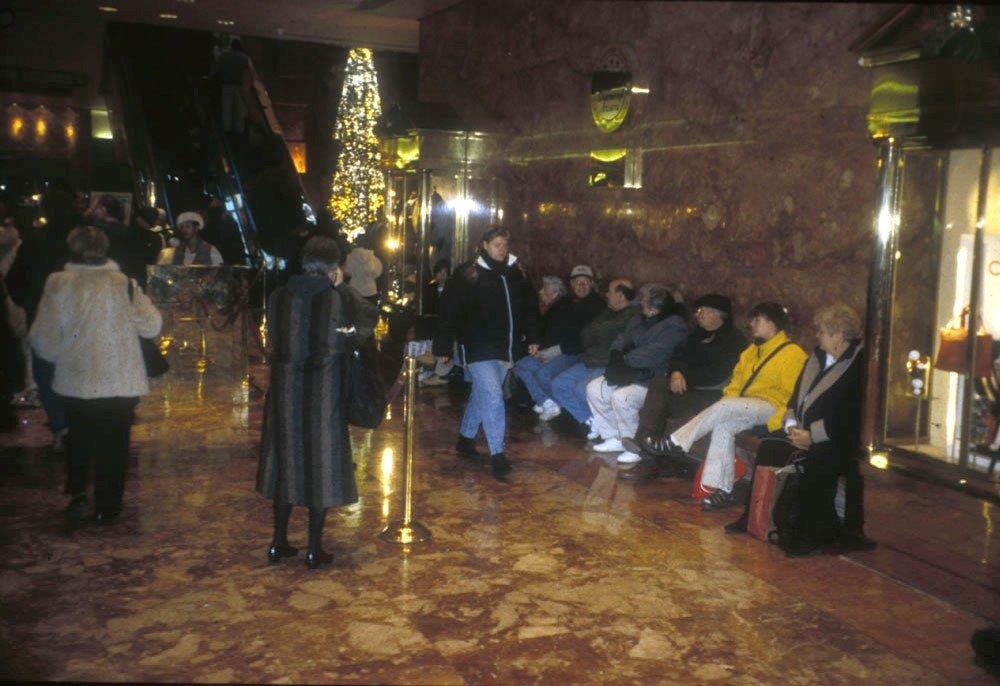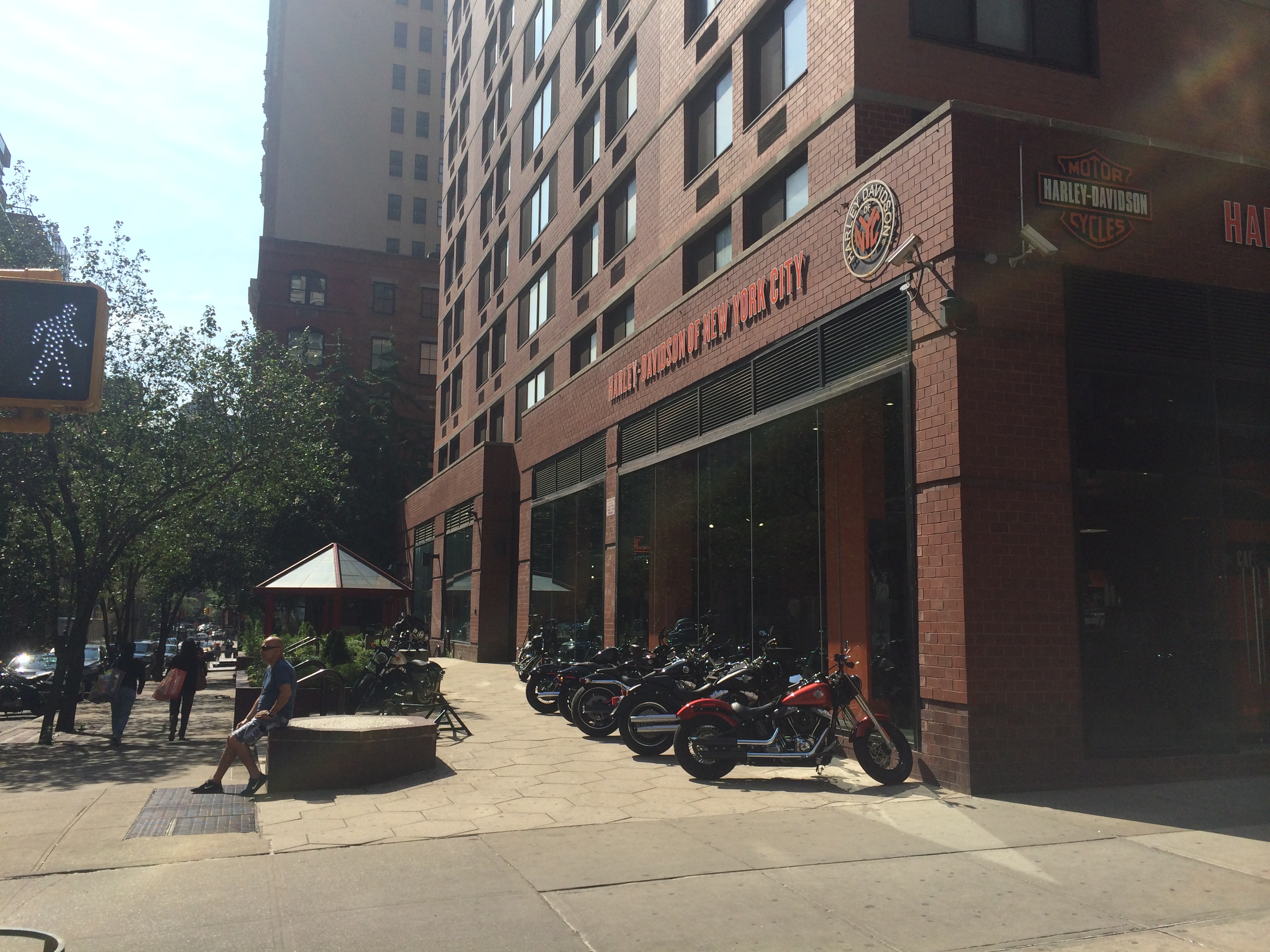Wall Street Journal reporter Kaya Laterman writes about the popularly known “Big Screen Plaza” with its 16-foot-by-30-foot high-definition television screen in the 10,000 square foot privately owned public space. Owner Andrew Rifkin sees the space as a cultural venue, with movie screenings and viewings of athletic events. The plaza’s digital director, Dave Scala, has promoted emerging artists by displaying images and short animated films.
Stones from 19th century Hudson River Railroad embankment identified at an Upper West Side POPS.
New York Times reporter David W. Dunlap writes about stones from the Hudson River Railroad embankment dating back to the 1840s that have been identified in the privately owned public space at 75 West End Avenue owned by the Brodsky Organization. Designer Quennel Rothschild & Partners originally incorporated the stones into the POPS years ago. Dan Brodsky, senior partner of the Brodsky Organization, responded favorably to urban archaeologist Joan Geismar’s proposal to install an identification sign for the stones which, happily, was designed by Geismar’s husband, graphic designer Tom Geismar.
Owners upgrade POPS at 560 Lexington.
David Dunlap of the New York Times writes about the $10 million upgrade to the covered pedestrian space and arcade at 560 Lexington Avenue, a New York City office building owned by long-time city real estate owners the Rudins. The architectural firm Skidmore, Owings, and Merrill designed the renovation. With its entrance to the subway, the MTA New York City Transit was a willing partner.
The Guardian continues its exploration of privately owned public space in London.
Bradley Garrett writes in The Guardian about London POPS, asking whether such spaces provide the same quality of ‘publicness’ as publicly owned public space.
Where is the legally required bench across from the elevators in the Trump Tower covered pedestrian space?

Matt Chaban of The New York Times reports on the removal of a public bench in Trump Tower’s covered pedestrian space to make room for a counter selling Trump Store memorabilia. The owner had previously immobilized the bench in the 1980s by placing planters on it.
Has Harley-Davidson improperly motored into TriBeCa POPS?

Tribeca Trust article describes how motorcycles have occupied an outdoor POPS at the southeast corner of Broadway and White Street.
London argues about public space and private interests.
Owner proposes to upgrade through block privately owned public space between 52nd and 53rd Streets west of Sixth Avenue.
An article in Curbed describes the proposed treatment with lights, a green wall, and a waterfall for the through block galleria at 135 West 52nd Street.
Seven-acre Toronto project relies on POPS rather than parks.
Should Toronto follow New York City’s lead with regard to POPS, asks an article in Spacing Toronto. Read the full article here.
Is upgrading POPS a trend? Read Keiko Morris’ Wall Street Journal article.
Keiko Morris of the Wall Street Journal reports on plans to upgrade the POPS at 180 Maiden Lane to include an art gallery, movie screen, and turf lawn. The article also mentions recent upgrades to other POPS in Lower Manhattan, including the POPS at 17 State Street and 55 Water Street. Read the entire article here.